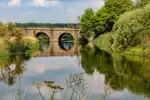- Home
- Nature Walks East of England
- Northamptonshire walks
- Fermyn Woods
Fermyn Woods Country Park - The Realm of the Purple Emperor
Fermyn Woods Country Park wasn't beating us — not for a third time. It was my birthday, and another drive home without a single photo to show for it would be unbearable.
A single photo of a purple wing kept replaying behind my eyelids. Every time I blinked I saw it again, like a promise.
Driving past the main gate, leaving the café and shrieks from the playground behind, we followed the instructions my friend had shared.
He said, low and conspiratorial: "Take the lane. It's a dark tunnel for about fifty yards. Crawl through — lights on, hug the verge for anything coming the other way. When you break out into the sunshine you are nearly in His Majesty's kingdom. When the lane opens, watch for two gates on the right — skip the first. The second takes you to the oaks; that's where the Emperors are. Get there early — otherwise you won't have room to park without blocking traffic."
Perhaps we took things a bit too literally. It was only 7:30 am when we arrived, no other cars in sight, and of course no beautiful purple butterflies either.
Facing the Butterfly Paparazzi
Fermyn Woods is a beautiful park with accessible trails and serene ponds. But on our first few visits, I felt that familiar sense of being on the outside looking in.
This feeling peaked when we turned a corner and saw them: a huddle of people with enormous camera lenses, all pointed at the ground, snapping away.
I know how intimidating a scene like that can look when you're starting out. It can feel like a private club you're not invited to.
But I’ve learned a secret: that group is actually a gift.
They're a giant, flashing signpost pointing to something amazing. And on that day, they were pointing to the elusive Purple Emperor butterfly.
But before we get to His Majesty, let's talk about the first step to building your confidence: learning to master a common challenge.
A Shift in Focus
My heart sank.
A beautiful Red Kite was circling right above me, its V-shaped tail unmistakable against the bright sky. I raised my camera, excited, but every photo I took was a dark, frustrating blob.
The camera, trying to balance the bright sky, had turned the majestic bird into a silhouette. It’s a classic beginner’s problem and it used to ruin my day.
If this happens to you, don't give up!
The secret is your Exposure Compensation button (+/-). For a dark bird against a bright sky, you need to force the camera to let in more light. Dial it up to +1 or even +2 and try again. You're not breaking it; you're telling it what you can see.
It’s the moment you feel like a magician. Suddenly, you're not just fighting your camera; you're in control.
You start capturing the rich colours of the feathers and the fierce look in its eye. We're not just taking pictures; we're preserving a moment of wildness, and that feeling is the first step to real confidence.
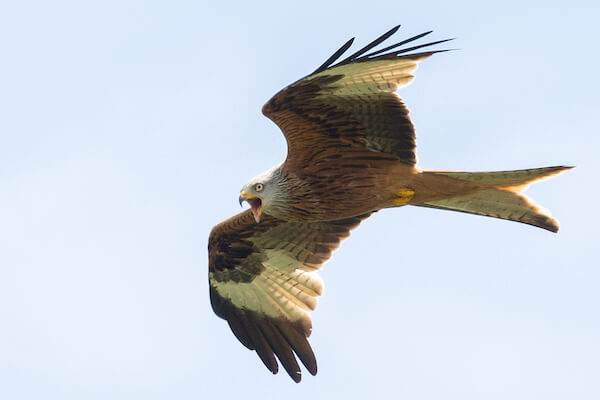 Red Kite
Red Kite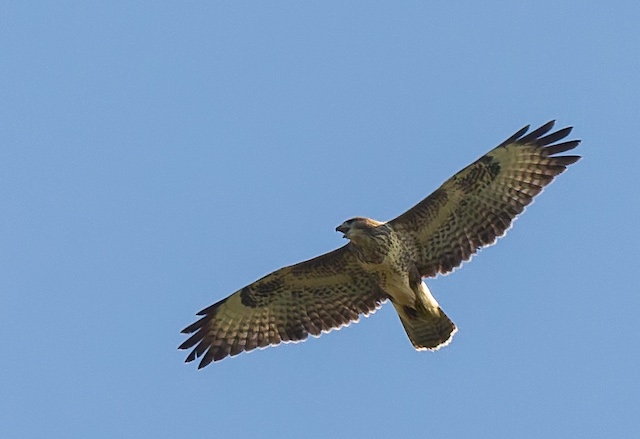 Common Buzzard
Common BuzzardAn Audience with the Emperor
Now, back to that butterfly.
The Purple Emperor is the second-largest butterfly in England and famously elusive. For years, I searched for one without success. Why? Because I was looking in the wrong places.
Here’s the kind of insider knowledge that changes everything.
You might see photographers with huge lenses and think you need one too. I used to think that! But the truth is, the most important tool is learning where to look.
So, forget about searching around sweet-smelling flowers.
Believe it or not, Purple Emperors love salty, messy patches — yes, even the kind you’d normally step around. It’s delightfully grubby insider knowledge.
Suddenly, you have knowledge that others don't. On my birthday one July, that knowledge paid off.
After hours of walking, we were on our way back to the car when we saw that huddle of photographers. And there it was, a male Purple Emperor, sipping from a muddy puddle. I dropped to the ground and joined the quiet, happy crowd.
I didn’t have a pro lens, but it didn’t matter. I snapped a picture I’ll treasure forever. A "record shot" that caught that flash of purple on the wing. What a fabulous gift. I was totally bitten by the "bug."
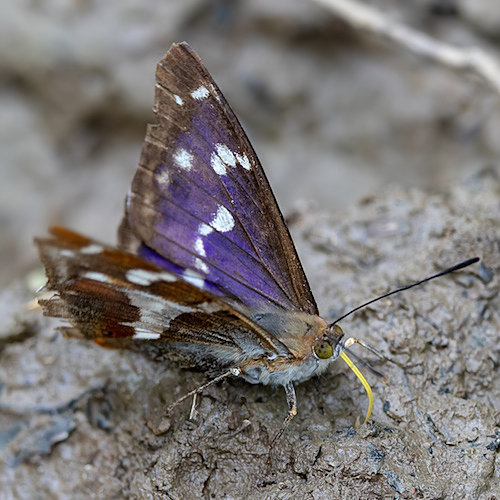 My first ever Purple Emperor
My first ever Purple EmperorA year later, armed with this new confidence, I went back.
This time, I found one myself, perched on a bush. As I set up my camera, a different butterfly, a Silver-Washed Fritillary, zoomed in and chased the Emperor away. Capturing that entire dramatic scene was a thrill like no other.
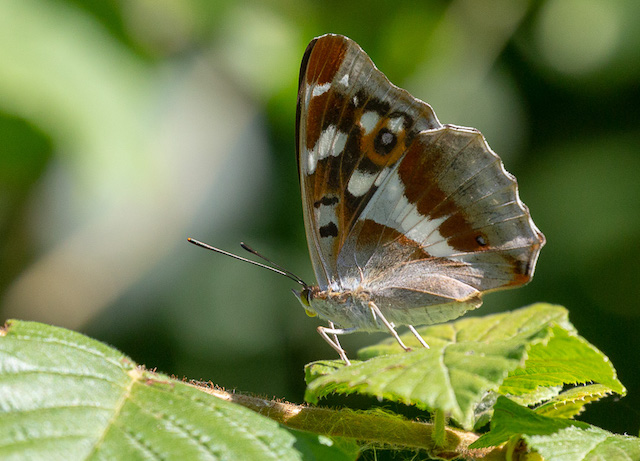 Purple Emperor
Purple Emperor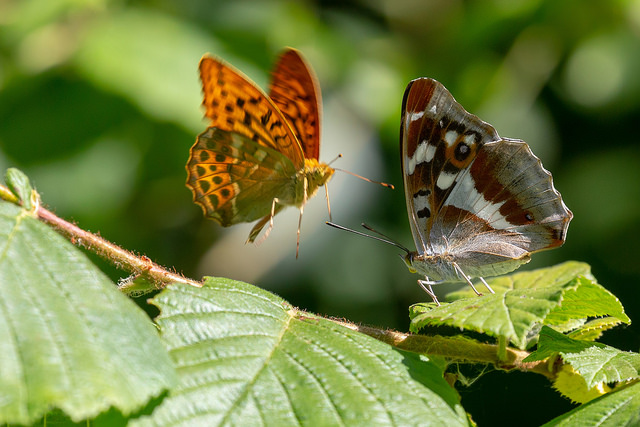 In flies a Silver Washed Fritillary
In flies a Silver Washed Fritillary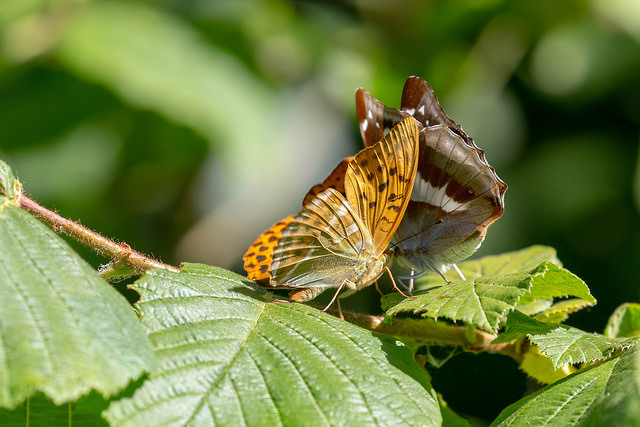 "I want to perch here!"
"I want to perch here!"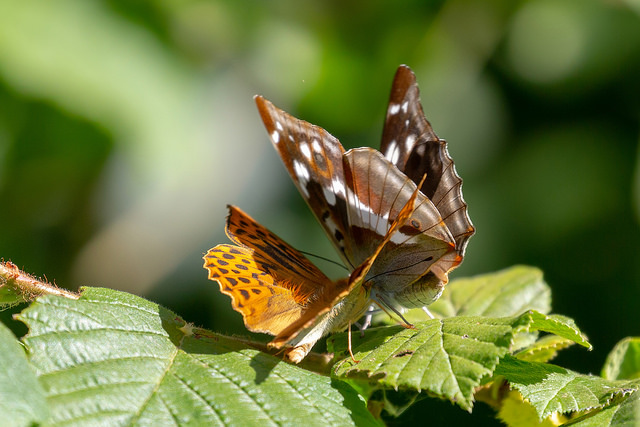 The Emperor departs
The Emperor departsI eventually sprawled on the ground near another one and finally managed a shot I was proud of.
The feeling is incredible, and it's something you can absolutely achieve. The key isn't being a 'pro'; it's being curious enough to learn one simple, weird trick.
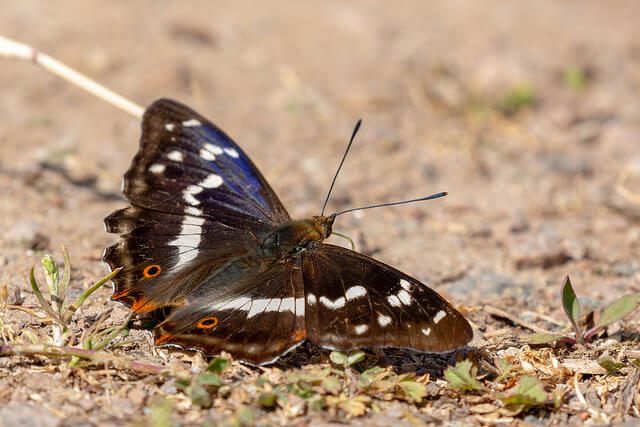 A hint of the purple upper wing
A hint of the purple upper wing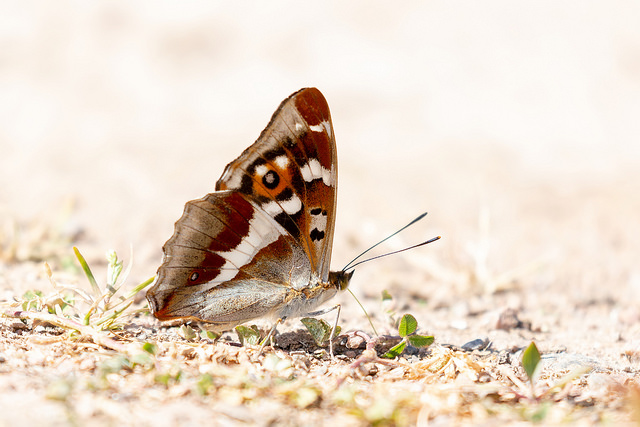 Taken with the camera on the ground
Taken with the camera on the ground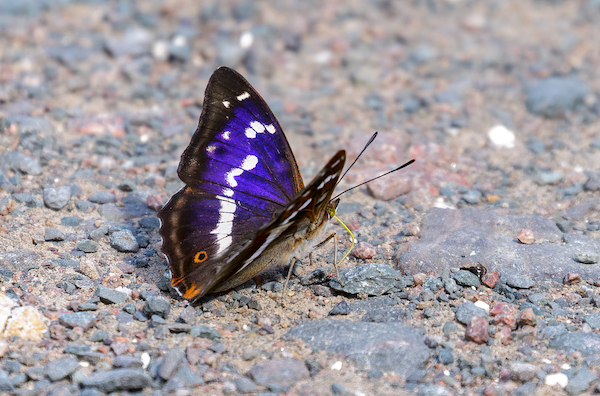 Male Purple Emperor flashing his iridescent wings.
Male Purple Emperor flashing his iridescent wings.from Observer to Explorer
My husband eventually had to pull me away, or I might have camped out there all day. So I reluctantly stood up to go, but I was plotting my return before we hit the car park.
That’s the real transformation. You go from feeling let down by what you didn't see, to feeling a constant, thrilling pull towards what you might discover next.
The eerie mewing call of a Red Kite becomes a "heads up" to grab your camera.
A muddy puddle (or pile of poop) becomes a place of possibility.
The real trophy isn't the perfect photo or a long list of species.
It’s the quiet confidence that comes from understanding the world around you. It's the shift from being an outsider to being in on the secret. And that is a feeling you can take with you on every single walk, for the rest of your life.
A Practical Guide to YOUR Fermyn Woods Adventure
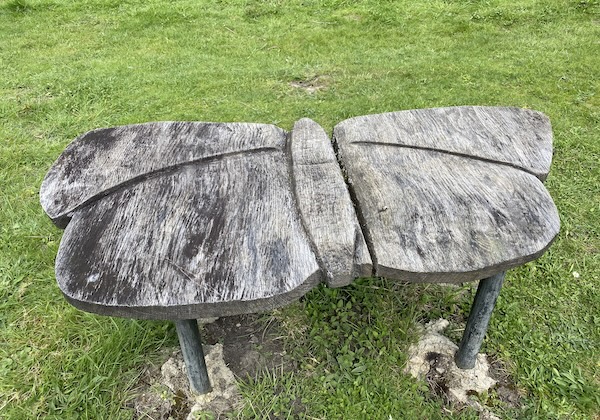 The last remaining butterfly seat
The last remaining butterfly seatReady to start your own journey? Here’s what you need to know.
- The Trails: The park has three waymarked routes, including the fully accessible Skylark Nature Trail. Don't be afraid to wander off them, as the best discoveries are often made when you chart your own course.
- The Butterflies: Besides the Purple Emperor (best seen in July), the path behind the visitor café is a hotspot for summer butterflies like the Silver-Washed Fritillary, Marbled White, Comma, and Common Blue. Keep your eyes peeled. (If you want to improve your butterfly photography, you can find my full page of tips here).
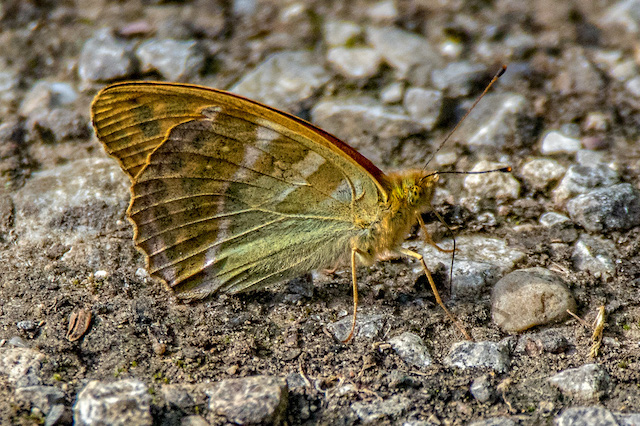 Silver Washed Fritillary - underwings
Silver Washed Fritillary - underwings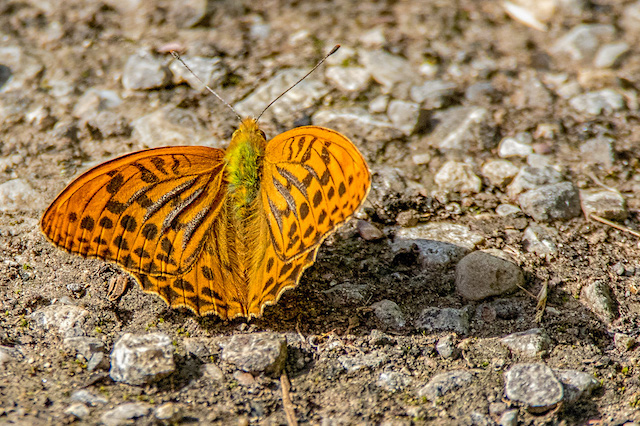 Silver Washed Fritillary - upper wings
Silver Washed Fritillary - upper wings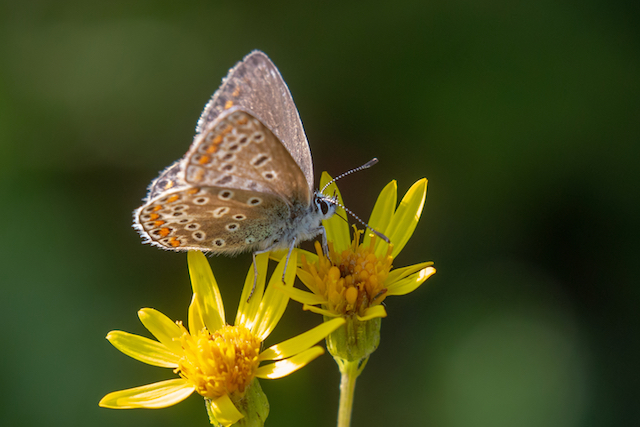 Female Common Blue
Female Common Blue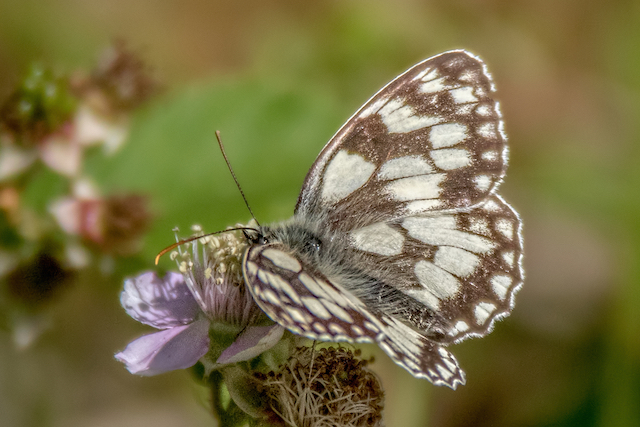 Marbled White
Marbled White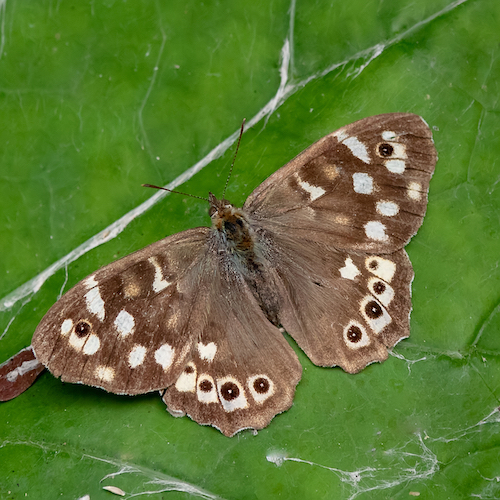 Speckled Wood
Speckled Wood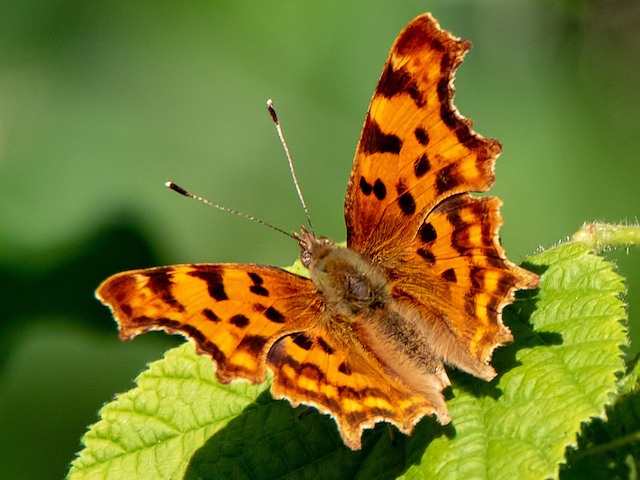 The Comma with it's distinctive wing shape. The comma marking is only visible on the back of the lower wings.
The Comma with it's distinctive wing shape. The comma marking is only visible on the back of the lower wings.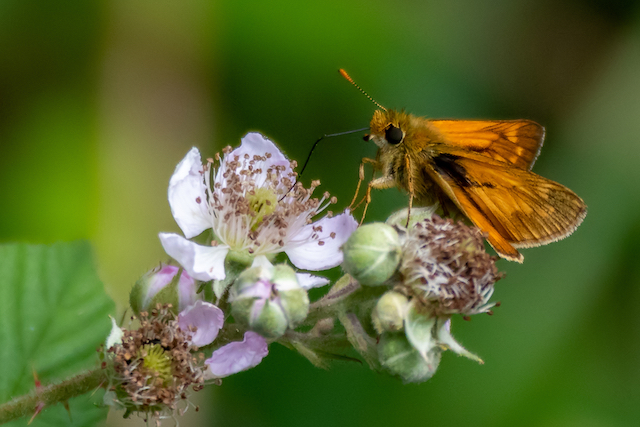 Small skipper
Small skipper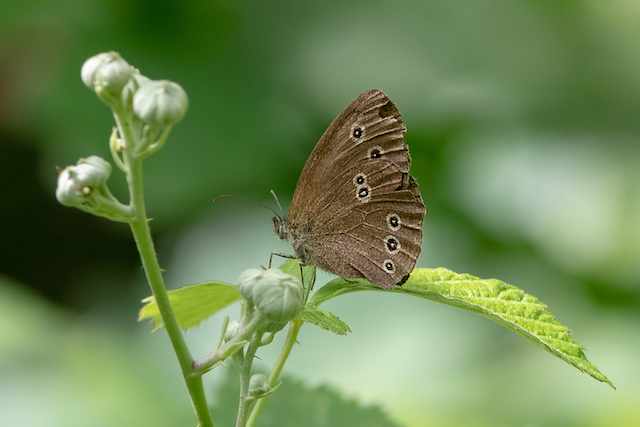 Ringlet
Ringlet- The Dragonflies: The ponds at Fermyn Woods may be small, but they are magnets for dragonflies and damselflies. On a sunny day, just sit quietly by the edge and watch for the jewel-like flash of an Emerald Damselfly or a Broad-Bodied Chaser. (I have more photos and tips on my dragonfly photography page here).
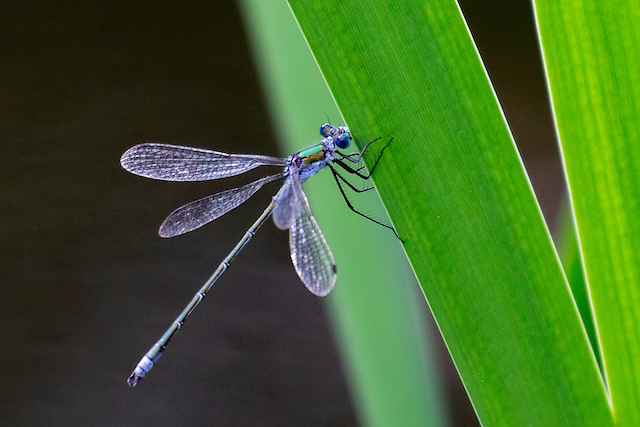 Emerald Damselfly
Emerald Damselfly Broad Bodied Chaser
Broad Bodied Chaser- Great Crested Newts: Taking the path near the Visitor Centre, and then the first left, will take you to a small piece of water that is home to the protected newts. It took me over an hour on my first attempt to get a decent photo!
- Other Wildlife: Listen for the calls of Red Kites and Common Buzzards overhead. If you are very quiet and very lucky, you might even spot the fallow deer that sometimes pass through the woods at dawn or dusk.
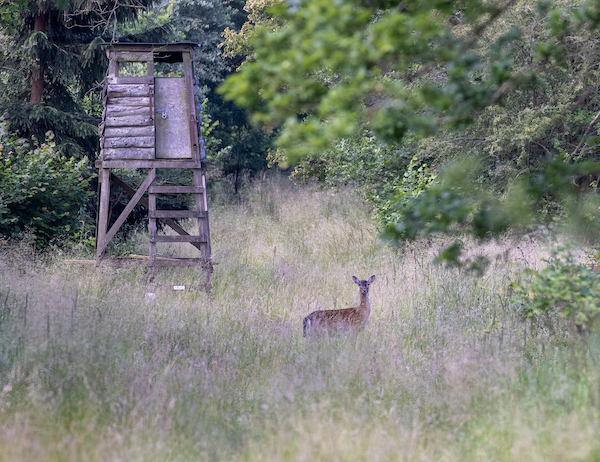 Fallow Deer. She had a fawn but it is not visible in this photograph.
Fallow Deer. She had a fawn but it is not visible in this photograph.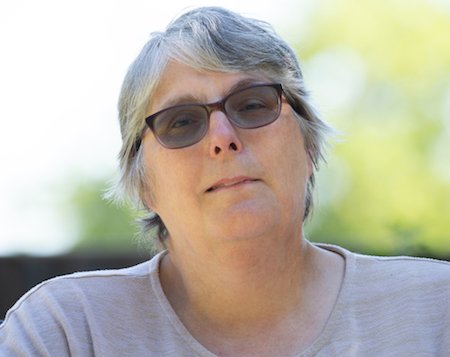
About the Author
I’m a wildlife photographer who learns on everyday walks. This site is my field notebook: practical photo tips, gentle ID help, and walk ideas to help you see more—wherever you are.
Step Behind the Wild Lens
Seasonal field notes from my wildlife walks: recent encounters, the story behind favourite photos, and simple, practical tips you can use on your next outing.

